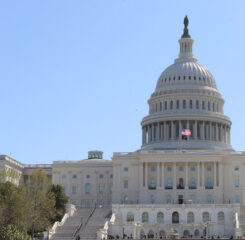White House Seeks New Tax Breaks for Housing
As part of its fiscal year 2022 budget request delivered to Congress on May 28, the Biden Administration has also released its tax proposals, including an expansion of the low income housing tax credit to include new Opportunity Housing Credit Dollar Amounts and a new tax credit, the Neighborhood Homes Investment Tax Credit.
Opportunity Housing Credit Dollar Amounts
Tax expenditures (spending) for the new Opportunity Housing Credit Dollar Amounts (OHCDAs) would equal 118% of the current allocation for low income housing tax credits. State OHCDA allocating agencies would be required to allocate the majority of their OHCDAs to projects in Census Tracts of Opportunity (CTOs). The proposal would define a CTO as a tract which is entirely in one or more Difficutl to Develop Areas (DDAs) or which has low poverty or other advantages, as determined by the Secretary of the Treasury in consultation with HUD.
LeadingAge has a particular interest in how CTOs would be defined. Too often, an area of “opportunity” is defined without considering the needs of older adults with low incomes and, instead, exclusively focuses on things like education and employment opportunities, which may or may not be the kinds of “opportunities” older adults are most in need of.
Under the White House’s proposal, the new OHCDAs would operate in parallel to the existing low income housing tax credit program.
Unlike the per capita allocations of low income housing tax credits, OHCDAs would be made available to all states on a per capita basis but with a different per capita amount applied to each state. The per capita amount for a state would be determined by a formula established by the Treasury Secretary in consultation with HUD that provides higher amounts to States with higher costs of constructing and operating affordable housing, as demonstrated by, for example, larger populations living in DDAs or higher percentages of rent-burdened households. Also, buildings in DDAs that receive allocations of either low income housing tax credits or OHCDAs would receive basis boosts of up to 50%.
Neighborhood Homes Tax Credit
The Treasury’s tax expenditure proposals note that there are “no Federal tax provisions that directly support building or renovating owner-occupied housing or that cover a development or financing gap.” To address this, the White House is proposing a new Neighborhood Homes Tax Credit (NHTC). The new NHTC would cover the gap between the cost of building or renovating homes and the price at which they can be sold. The NHTC would also help existing homeowners rehabilitate their homes, even in the absence of any plans to sell them.
The NHTC would support new construction for sale, substantial rehabilitation for sale, and substantial rehabilitation for existing homeowners. The constructed or rehabilitated residence must be a single-family home (including homes with up to four dwelling units), a condominium, or a residence in a housing cooperative. Broadly conceived, the amount of the NHTC would be computed as development costs less the sales price or, in the case of a homeowner rehabilitation, less the amounts paid by the homeowners. The amounts that may actually be claimed would be subject to several limits.
Broadly conceived, the amount of the credit is computed as development costs less the sales price or, in the case of a homeowner rehabilitation, less the amounts paid by the homeowners. The amounts that may actually be claimed, however, are subject to several limits.
Homes that are redeveloped using the NHTC could only sell for four times the area median family income, and homebuyers cannot have incomes exceeding 140% of the area median family income. According to the White House, this would enable low- and moderate-income buyers – including homebuyers of color – to purchase their own homes and build wealth.
Expanding homeownership to low and moderating income buyers is important to LeadingAge. A key driver of net household wealth is home equity, but the gap between white and Black homeownership rates, 74% vs. 45%, respectively, is staggering. Figuring out a web of policies and supports to encourage smart homeownership among all households, and particularly non-white households, will shrink the affordable housing crisis as even the lowest income homeowner households have significantly more wealth in retirement than their renting peers.
Read the Administration’s full tax requests here.
Read about the Administratin’s requests for HUD funding for fiscal year 2022 here.

Most Recommended
July 01, 2025
 Budget Reconciliation 2025
Budget Reconciliation 2025
June 27, 2025
Pathways for Foreign-Born Workers
Recently Added
July 03, 2025
 Update and Insights: SNF Off-Cycle Revalidations
Update and Insights: SNF Off-Cycle Revalidations
July 02, 2025



